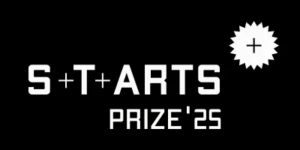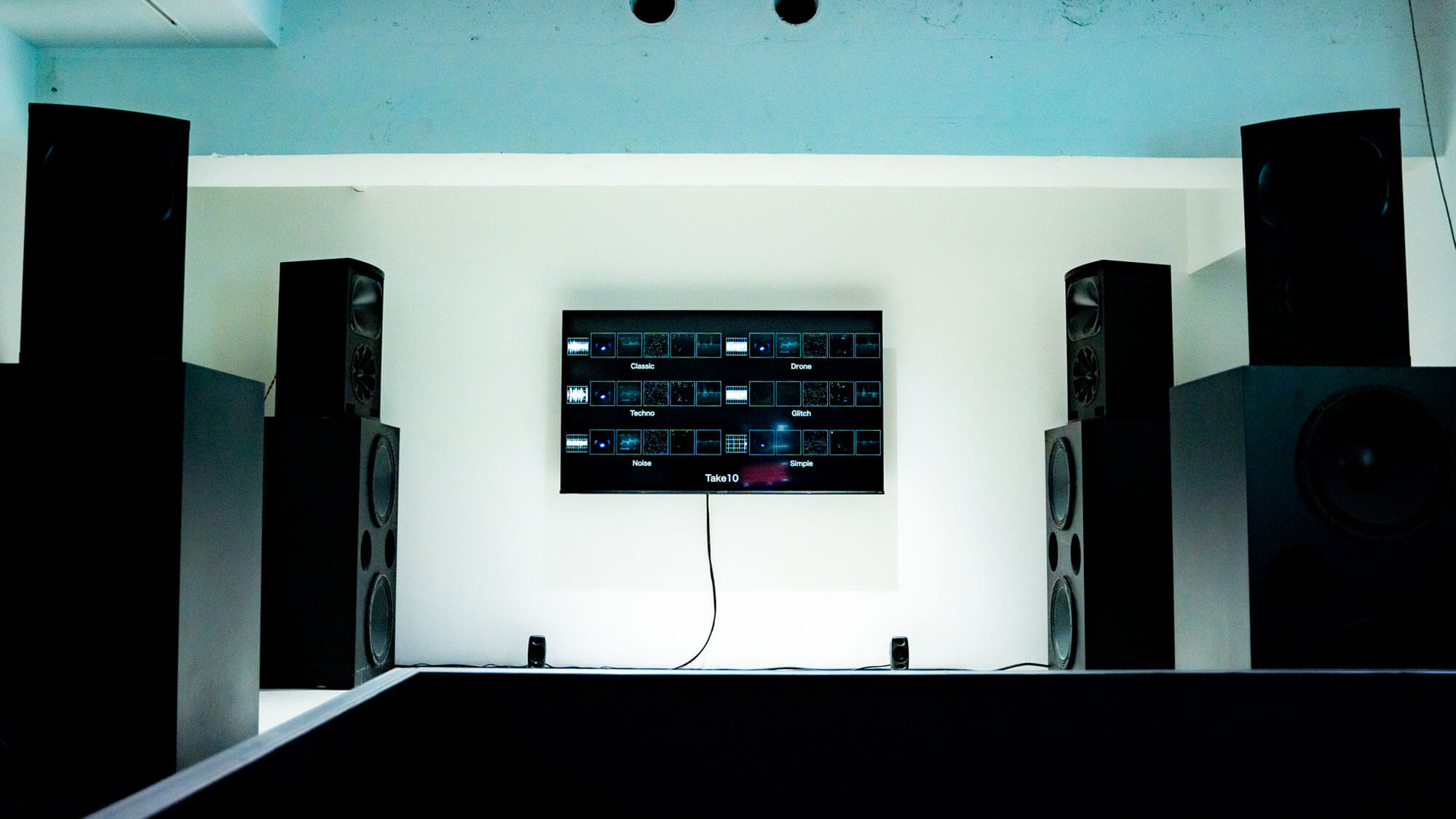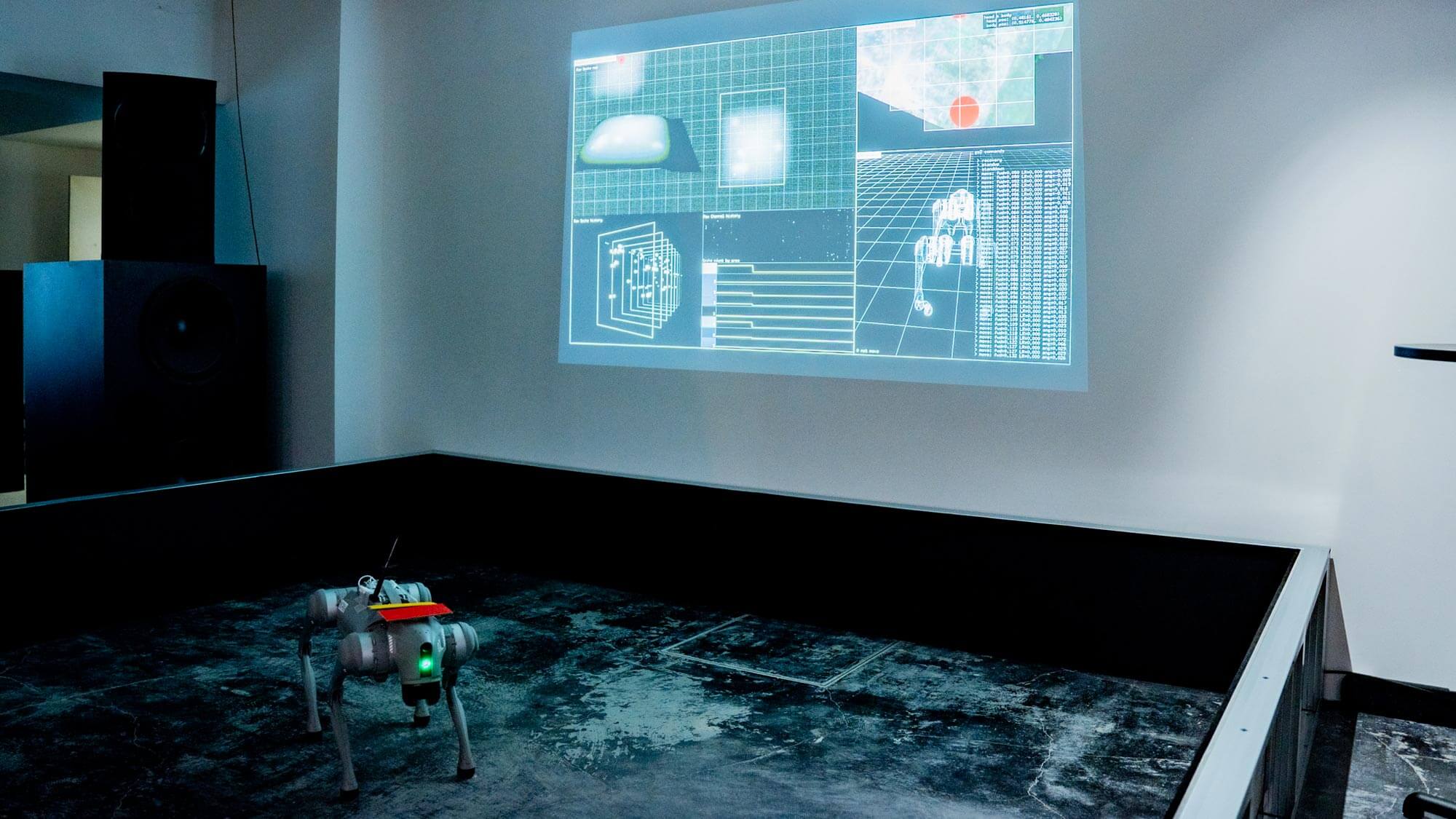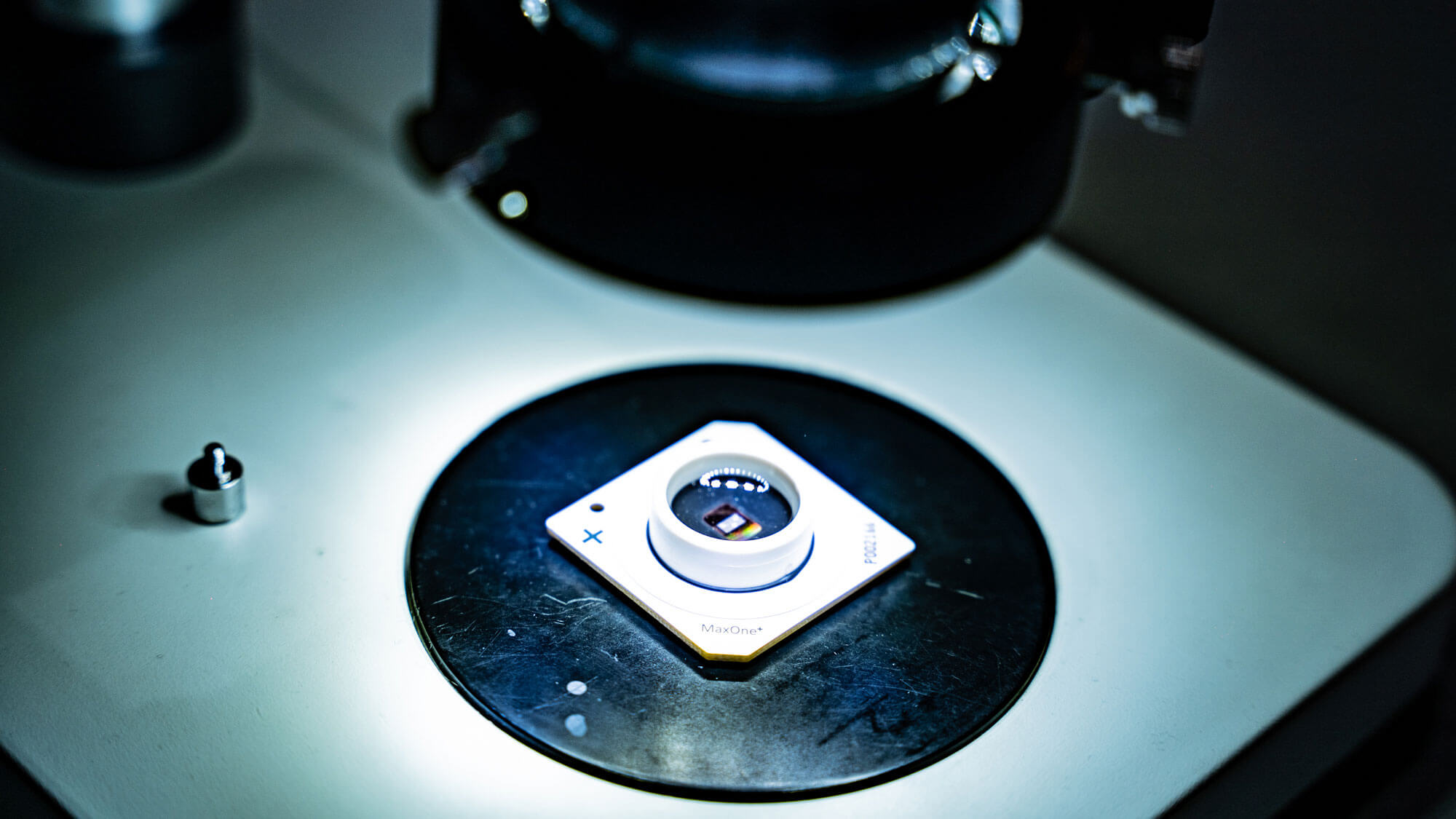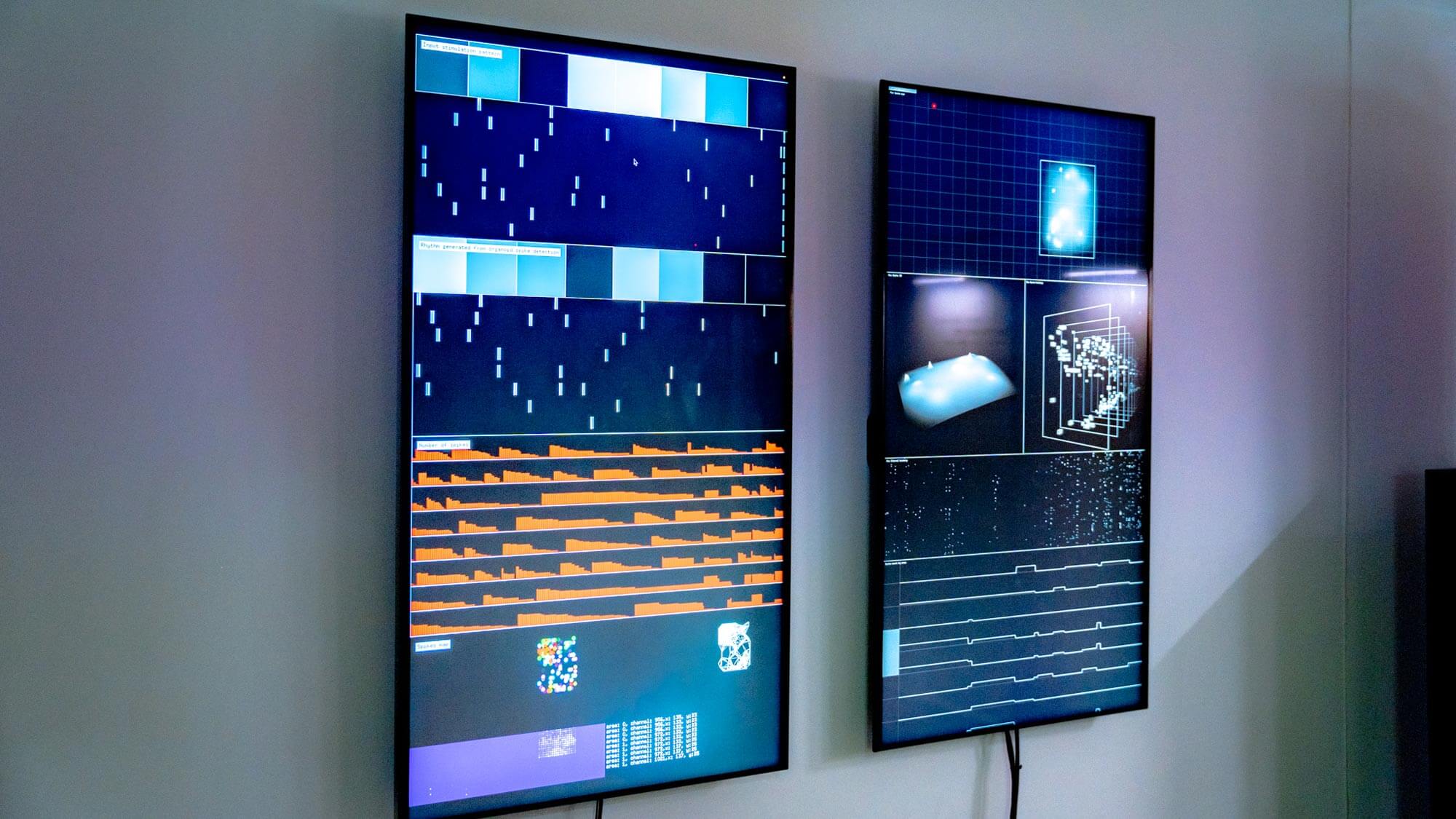Honorary Mention
Focusing on the distinctive abilities of the human brain, such as adaptability to unfamiliar environments and remarkable learning efficiency, the SoftBank Research Institute of Advanced Technology has been collaborating with artist Daito Manabe and the Ikeuchi Laboratory at the University of Tokyo on a project since 2022. Together, they have been working on methods to stimulate cerebral organoids, analyze their activity data, and develop the necessary APIs, networks, and other interface technologies. In February 2025, they held an exhibition showcasing the current state of cerebral organoid research and the vision they are pursuing through cutting-edge technologies.
daito.ws/projects/brain-processing-unit
In the Cellular Ears experiment, brain organoids were presented with music through noise-minimized optical stimulation. This optical stimulation was designed to emulate the frequency analysis performed by the human inner ear. Brain organoids were exposed to various genres of music, including techno, classical, ambient, and noise, and changes in neuronal activity patterns, such as timing and response patterns, were analyzed.
The results showed that the brain organoids exhibited distinct neural activity patterns for six different music genres, enabling classification with an accuracy exceeding 70%. This indicates that brain organoids have the potential to discriminate between music genres. Moreover, neural activity after music exposure ceased could also be classified with a certain level of accuracy, suggesting that brain organoids may experience changes in mood or internal state after listening to music, analogous to humans.
In the Life and Rhythm experiment, rhythm patterns were input to brain organoids as electrical stimulation, and subsequent neural responses and spontaneous activities were observed. Specifically, during the first half of a one-minute cycle, a specific rhythm pattern was presented through regular electrical stimulation, after which the stimulation was halted, and autonomous neuronal activities were recorded in the second half. The results demonstrated that once the brain organoids had been stimulated with a rhythmic pattern for a certain duration, they spontaneously generated neuronal activities that mimicked the provided rhythm pattern even after cessation of stimulation. This phenomenon resembles humans’ natural inclination to move their bodies upon hearing rhythmic patterns, supporting the intriguing hypothesis that “life inherently seeks rhythm.”
Credits
Organizer: SoftBank Research Institute of Advanced Technology
Collaborators: Daito Manabe, Studio Daito Manabe, Ikeuchi Lab (Institute of Industrial Science, University of Tokyo), INERTIA
Production credits:
Direction, composition, sound design & programming, visualization: Daito Manabe (Rhizomatiks, Studio Daito Manabe)
Software engineering: 2bit, Ayumu Nagamatsu
Production support: Keke (Studio Daito Manabe), Yuta Okuyama
Project management: Takao Inoue (Rhizomatiks)
Advisor: Masaki Teruoka
Exhibition space design: Takahito Hosono (OFF-FLAT)
Construction: ARTE, Tatsuya Motoki (OFF-FLAT)
Production collaboration: SoftBank Research Institute of Advanced Technology, Ikeuchi Lab (Institute of Industrial Science, University of Tokyo)
Equipment collaboration: Panasonic Connect Co., Ltd.
Documentary photography & video production:
Director: Tomoyuki Ichikawa (Nippachi Factory)
Assistant director: Aya Shinohara (Nippachi Factory)
Motion graphics & editor: strings VY
With support from: SoftBank Research Institute of Advanced Technology, Daito Manabe, Studio Daito Manabe, Ikeuchi Lab (Institute of Industrial Science, University of Tokyo), INERTIA
Biography
Daito Manabe (JP), born in Tokyo in 1976, grew up surrounded by music and programming, influenced by his musician parents. After working as a DJ and jazz band member, he studied at Tokyo University of Science, where he was inspired by Xenakis and began researching mathematical music generation. In 2006, he founded Rhizomatiks, merging technology and physical expression through collaborations including AR direction for the Rio Olympics closing ceremony. He has worked with artists like Ryuichi Sakamoto and Björk, and recently, he has created works using biofeedback systems with cultured neural cells, currently leading Studio Daito Manabe.
Jury Statement
Beyond classical computing, which values logical optimization and reproducibility, and even beyond rapidly advancing quantum computing, this project explores a new frontier of creativity using the Brain Processing Unit (BPU)—a biological processor made from lab-grown brain organoids. Led by artist Daito Manabe with the University of Tokyo and SoftBank, this industry–academia–art initiative explores the roots of human creativity by introducing music and rhythm into interactions with the BPU. Particularly interesting is that, as living tissue, organoids can show fatigue or errors—responses that, as well, may challenge conventional notions of correctness and suggest alternative, possibly evolutionary, forms of intelligence. By posing essential, uncompromising questions, the artist productively disrupts the conventional research process, opening new directions and accelerating discovery. This project is a powerful example of how artist-led contributions to fundamental research can expand emerging technologies and inspire new societal visions.
